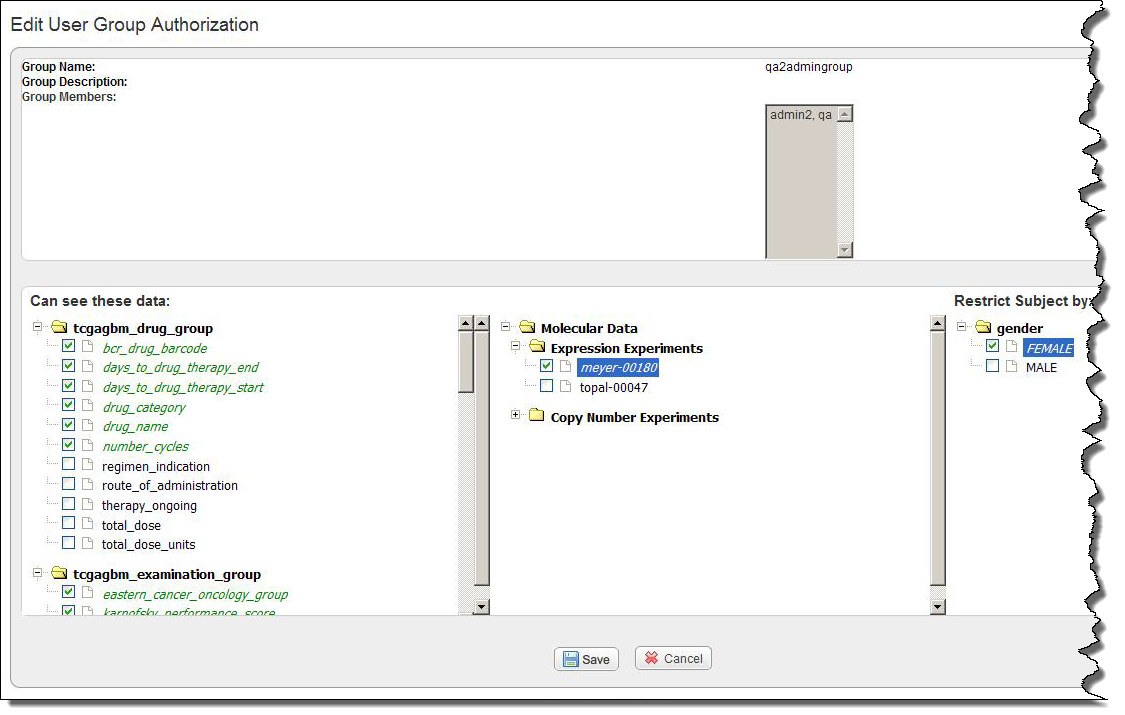 |
Page History
...
Topics in this chapter include:
| Table of Contents | ||
|---|---|---|
|
Managing a Study
| Info | ||
|---|---|---|
| ||
A user without management privileges has no access to this section of caIntegrator. |
...
- On the left sidebar, click Manage Studies. The Manage Studies page appears, shown in the following figure.
All of the "in process" or "completed" studies display on this page with associated metadata. Note that whoever edited or updated the study last is shown in the Last Modified Column, indicated as the Study Manager. - Click the Edit link corresponding to your study of choice to open the Edit Studies page, shown in the following figure.
On this page you can edit any details such as adding or deleting files, survival values, and so forth. For information about working with the Edit Study feature, see Creating or Editing a Study. - Click the Delete link to delete the corresponding study.
...
At the bottom of the study page, the Authorize User Groups feature displays. This section is empty when the study is first configured. The following figure displays an two example users groups.
To configure access to a study, follow these steps.
...
Once the authorization is assigned, study investigators in the user group can query and analyze clinical and genomic data or annotation data for the subjects/patients (studies) to which they have been granted access.
Editing User Group Authorization
| Tip | ||
|---|---|---|
| ||
Some users report that the functionality of managing user group authorization works best if done POST-DEPLOYMENT of the study. If done prior to deployment, there were issues with the consistency of performance. |
To edit authorized user groups, follow these steps:
- Go to any study > Authorized User Groups > Activate Group Authorization.
- On the Authorize Additional User Groups page, authorize one or more groups.When you finish, caIntegrator returns you to the Edit Study page and a new Edit Authorization button becomes available.
- If you select the Edit Authorization button, you are redirected to the Edit User Group Authorization page (example shown below) where you can manage the authorization group permissions to see or not see a particular part of the study. You can specify the data the group named in the dialog can see, or you can specify other restrictions the screen displays by checking or unchecking corresponding boxes.
Managing Platforms
...
- Click Manage Platforms on the left sidebar.
The Manage Platforms page that opens lists in the Existing Platforms section the platforms caIntegrator currently supports, those that the system can pull from caArray. See the following figure. You can also add a new platform by entering information in the fields in the Create a New Platform section.
- To add a platform, in the Platform Type field, select the appropriate platform type from the drop down list.
Click Browseto navigate for the Affymetrix or Agilent file you want to add.
Info title Note Tab-delimited .txt or .tsv Agilent platform annotation files must contain the following column headers: ProbeId, GeneSymbol, GeneName and Accessions.
- Enter a Platform Name if the file is a NON-GEML.xml file.
Depending on the Platform Type you select, there may be other parameters to provide here as well, such as Platform Channel Type for an Agilent platform. - Click the Browse button to browse for the appropriate annotation file.
- When you have located it, click Open in the Upload File dialog box. The system displays the annotation file you select in the Annotation File box.
- Once all parameters have been entered, click Create Platform.
...


